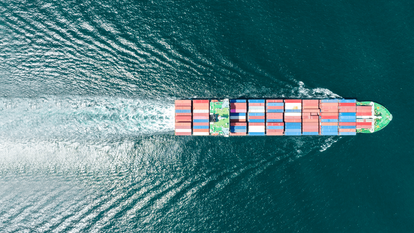Maritime Transport Joins the EU ETS - Key Takeaways

Since January 2024, the maritime transport sector has been subject to the terms of the EU ETS, resulting in numerous changes in the operation of European maritime freight in order to reduce emissions and finance the transition to a more sustainable world.
In this article, we'll cover the key takeaways from this significant development.
The EU Emissions Trading System (EU ETS) in a Nutshell
The EU Emissions Trading System (EU ETS) is a cornerstone of the EU's climate change policy, and is a primary component when it comes to reducing greenhouse gas emissions.
It is the world's first carbon market, and remains the largest.
Key functions of the ETS:
- Helps to reduce emissions and generate revenue to finance the EU's green transition.
- Operates in all EU countries as well as in Iceland, Liechtenstein, and Norway.
- Covers emissions from about 10,000 installations in the energy sector and manufacturing industry, as well as aircraft operators flying within the EU and to Switzerland and the UK, accounting for approximately 40% of EU emissions.
Since January 2024, the ETS also covers emissions from the maritime transport sector.
The Evolution of the EU Emissions Trading System (EU ETS)
The European Green Deal, announced in 2019, is a plan to achieve net-zero emissions by 2050. To ensure its implementation, structural adjustments are necessary, leading to the Fit for 55 package, announced in 2021.
Fit for 55 is a set of policy initiatives aimed at helping Europe achieve the goal of reducing net emissions by at least 55% by 2030 compared to 1990 levels.
The emissions trading system is part of Fit for 55.
This emissions trading system is based on cap and trade, where a maximum cap is set on the total amount of greenhouse gases that can be emitted by companies in the EU in a given year for industries covered by the ETS.
Companies subject to the ETS must purchase allowances based on the amount of greenhouse gases they emit and yield them accordingly.
Emission allowances can be purchased in the primary market through auctions. Therefore, the costs of allowances vary depending on the auction value. They are adjusted based on index performance.
There is also a secondary market where allowances can be sold bilaterally or through various derivatives provided by financial institutions.
Emissions Trading Applied to European Maritime Transport
In practice, shipping companies will need to buy and yeild ETS emission allowances for each ton of CO2 emissions reported and pass these costs on to their customers.
Key points to remember for organisations in the maritime sector:
- Shipping vessels over 5000 gross tonnes entering/leaving EU ports, regardless of their country of origin, are affected.
- The system covers 100% of emissions occurring between two EU ports as well as 50% of emissions from journeys starting or ending outside the EU.
- This also applies to ports located within 300 nautical miles outside the EU.
- There is a transition period: starting with 40% of verified emissions in 2024, 70% of emissions in 2025, and 100% in 2026.
- A surcharge has been in place since January 2024, which applies to all shipments aboard at European ports.
MyTower - Experts in Transport, Customs, and International Trade Digitalization
MyTower is a provider of TMS (Transport Management System) and GTM (Global Trade Management) platforms and software for shipping organisations.
Our specialty? Our team of consultants and experts in transport, customs, and trade compliance offer a data-oriented service that supports each phase of your diagnostics, research and proposals processes.

